In this review, I test a broadhead unlike any I’ve ever seen… the Toxic Broadhead from Flying Arrow Archery.
I love innovations and this broadhead definitely fits the bill.
Toxic Broadheads At First Glance
The Toxic broadhead has is six curved blades, each of which come together to form three different circles, and they call this the “meat worm technology.”
That’s a nasty-sounding name, but it describes how the head literally cuts three cores of tissue out of animals, leaving a devastating wound channel.
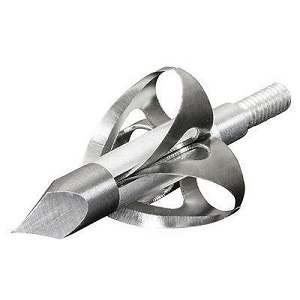
The Toxic broadhead has a chiseled tip and six single-bevel blades.
Head Structure
Each of the six blades on the Toxic come together at the top of the head, but there is a little space between them. Like some of the 2-blade broadheads that I have tested, they are single bevel blades, which is supposed to allow them to be able to flare out a little bit and go around bones, leaving a devastating wound channel. (I’ve seen them take down a moose, and it is definitely devastating).
The Toxic has a chiseled tip, which adds to its penetrating ability and toughness upon hard impacts. It also spins very true.
I wasn’t able to find any of the specs on the broadhead itself, the type of steel, and the thickness of the blades, and so forth. Usually, on most broadheads, I can find that information and supply that.
However, in this case I just had to gather information based on the test results themselves to test penetration, durability and penetration, durability, draining ability and flight.
Even though I had heard reports of the Toxic broadhead flying well, I had a hard time believing it. I was eager to find out for myself…
-

N1 Outdoors® Tine Lines™ Elk Antler Tee
Price range: $26.99 through $29.99 Select options This product has multiple variants. The options may be chosen on the product page -
Sale!
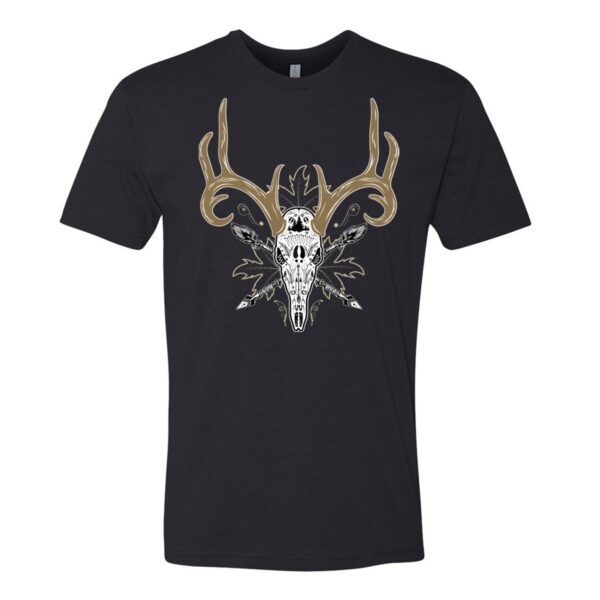
N1 Outdoors® Whitetail Sugar Skull Tee (Black/Columbia Blue)
$19.00 Select options This product has multiple variants. The options may be chosen on the product page -
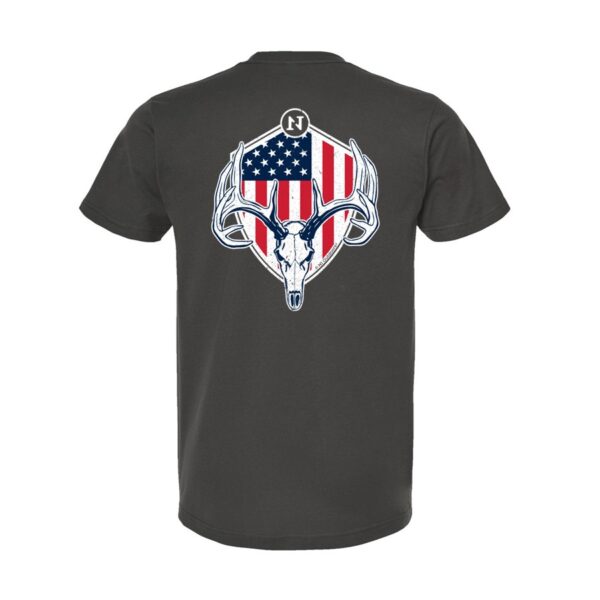
N1 Outdoors® “USA Antler” Tee
Price range: $24.99 through $28.99 Select options This product has multiple variants. The options may be chosen on the product page
Penetration Testing
To test the overall penetration and durability, I started by shooting the Toxic into my medium which consisted of the following: a half-inch layer of MDF, surrounded by a third-of-an-inch of rubber foam matting, followed by clear ballistic gel.
I then shot it into a 22-gauge steel plate, with the intention of shooting it up to five times, as the blade will allow before they get seriously damaged. In this test, once serious damage occurs, I stop.
For each shot where they don’t get damaged, I give them 2 points for a maximum of 5 shots; a maximum of 10 points.
As in all my tests, I am shooting the Bowtech SR6, set at 72 pounds and 27-inch draw. I’m using a Bishop Archery FOC King Arrow, 460 grains and FOBs and a nockturnal nock.
Into MDF / Foam Rubber / Ballistic Gel Medium
In the penetration testing, the Toxic went a total of 6-3/4 inches into this medium. It was really cool to see the hole created by the “worm technology.” The wound channel created was incredible.
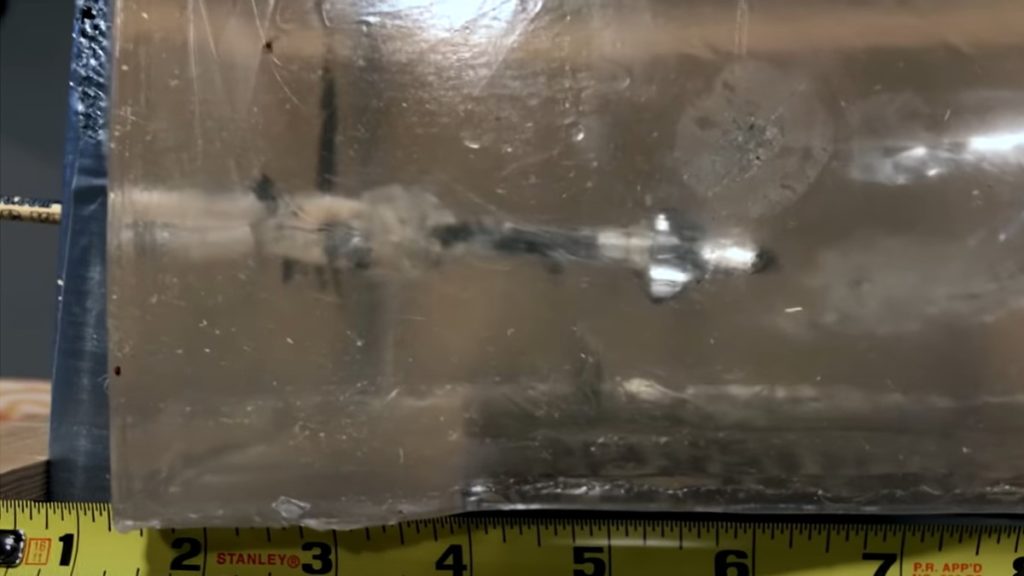

Into Steel Plate
As for the edge retention, which was what I was testing it for, the Toxic really could only handle one shot. After the shot, the tip of this head looked pristine. I imagine it could have gone through steel a hundred times. It would probably stick in concrete as well.
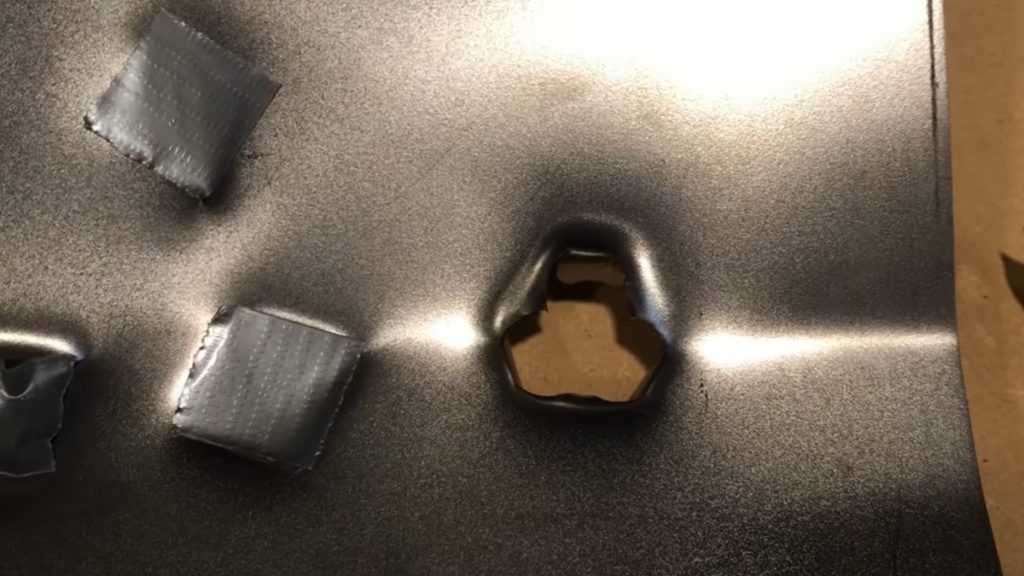
The blades however, got pretty bent and the edges pretty mangled. I’ve had other heads do much better. I had to call the test complete after just one shot through the steel. So, I’ll give that 2 points.
So, the tip held up great. The edge retention? Not so good.
Water drain test
In the water bag drainage test, I was curious to see how quickly the Toxic would drain the water bag. I used this as a test to get an idea of what the wound channel would be like.
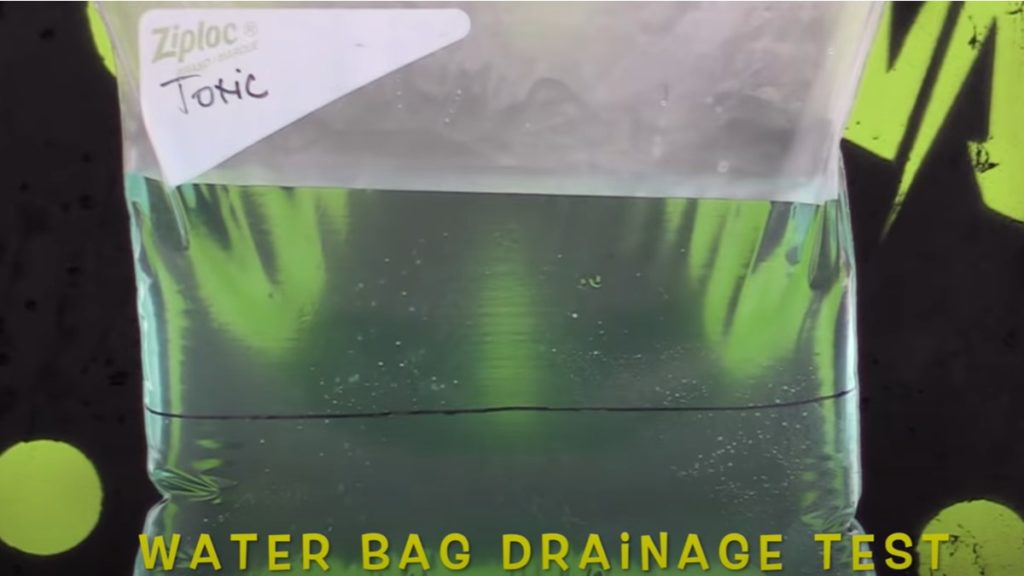
The Toxic drained the water bag in just 1.4 seconds, which is astounding. This is a result of the incredible amount of cut that this head provides.
Shooting at distance
You might think, “Wow, the Toxic has over 4 inches of cut. That’s impressive!”
However, you might also assume that with 4 inches of cut, “there’s no way that’s going to fly well.”
But, it actually flew relatively well. I could readily pop balloons at 70 yards.
Some fixed-blade heads have flown better, that’s for sure. But, some have flown worse. So overall, a good flying head.
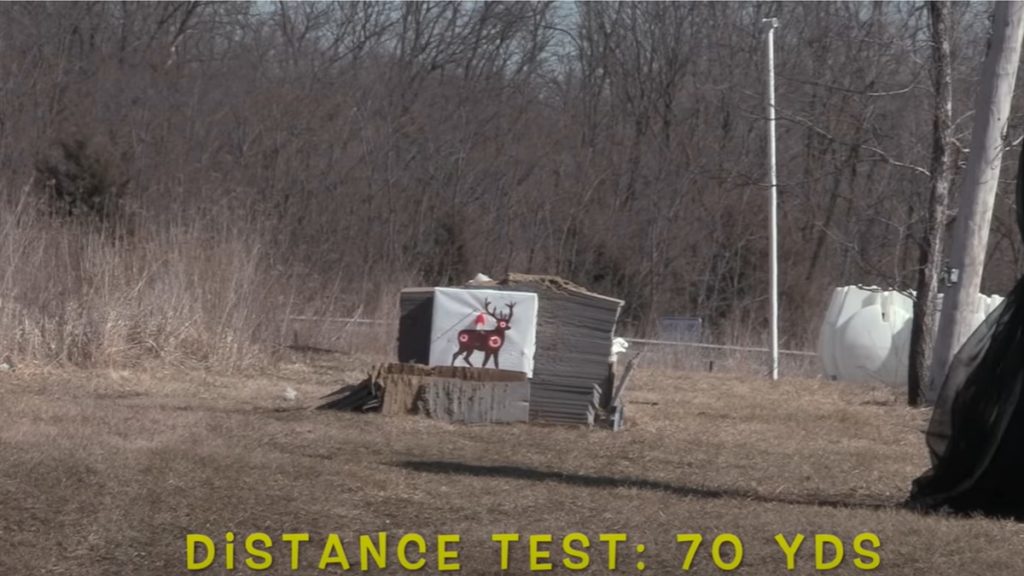
The Toxic flew surprisingly well. I was able to pop a balloon at 70 yards.
Toxic Broadhead Recap
So, what do you think of the Toxic broadhead?
I have to be honest. When the Toxic first came out and I read about it, I thought this head was 100% gimmick. I didn’t see how it could fly well. I didn’t see how it could hold up or penetrate well.
However, after reading some of the reports and seeing some of the damage on animals, I finally got around to testing it. And I have to say, I was impressed.
The primary reason that I think it has done so well is the total cut size that you have as well as the total amount of tissue being cut (over 4 inches) as it passes through something.
The reason for this is the circumference of each of the blades that sort of curl into a circle if you will, is about 1.3 inches total. So, multiply that x3 and you’ve got over 4 inches of tissue being cut.
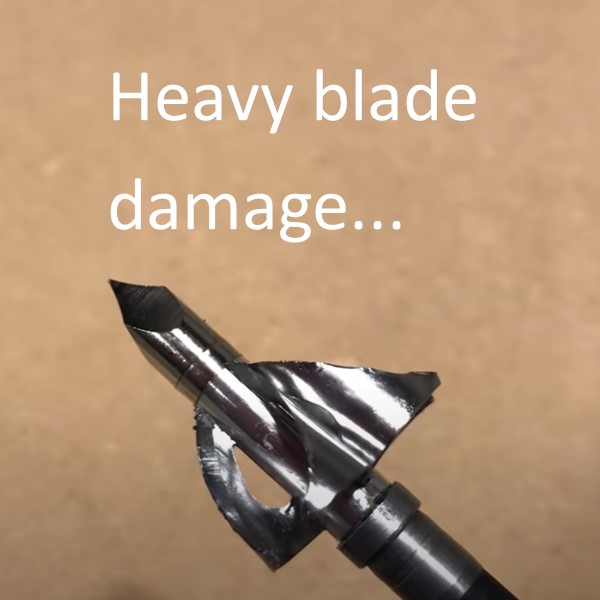
Now, the big drawback with the Toxic is durability. The chiseled tip is extremely strong. However, the blades themselves are relatively thin and then they come to a pretty thin point as they wrap around into the circle. They are sharpened at a single bevel.
Compare that cut to some other heads:
- The QAD Exodus broadheads: 1.875 total inches of cut
- Rage: 2 inches of cut
- Slick Trick broadhead: 1-inch diameter, and 2 inches of cut
- GrizzTrick broadhead, 1.25 inches of diameter and 2.5 inches of cut
In terms of penetration, you would think, “Man, with 4 inches of cut, there’s no way that’s going to penetrate well through MDF and rubber foam mat and ballistic gel.”
But, it actually did. It didn’t penetrate as well as some other broadheads, but for 4 inches of cut, it penetrated pretty well.
But the durability… not so good.
So, all of that means is that the blades are not super durable, and you saw that in the steel plate test, as they got pretty dinged-up and bent just in the 22-gauge steel plate.
And, while I have certainly had broadheads do much better, I have not seen another broadhead do this poorly in a 22-gauge steel plate.
Final Thoughts On Toxic Broadheads
The Toxic may be a “one-and-done” broadhead. However, the amount of damage that you are going to get from that one shot could be really significant.
So, how would I feel hunting with this head? I would be a little cautious because I worry about the durability if I’m hitting a hard bone, especially if I hit a bone at an angle.
However, with the amount of cut that you get, the good flight and the way it has performed well even through a hard layer like MDF, I would definitely give it a whirl. If it can cut through that much tissue while it penetrates that much and flies that well, it’s definitely worth a look.
So this is certainly not a gimmick. Give the Toxic broadhead from Flying Arrow Archery a second look.
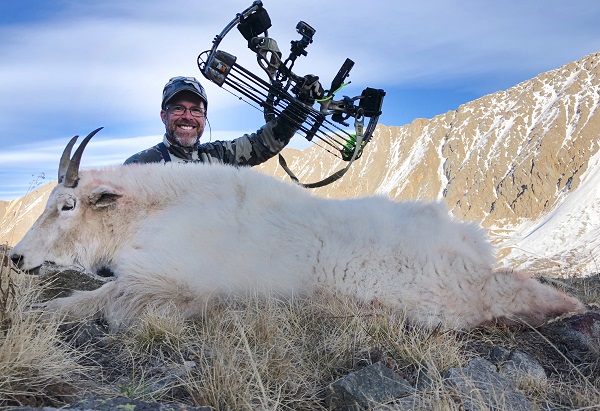

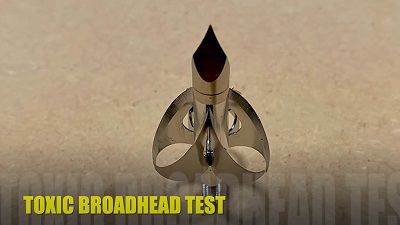



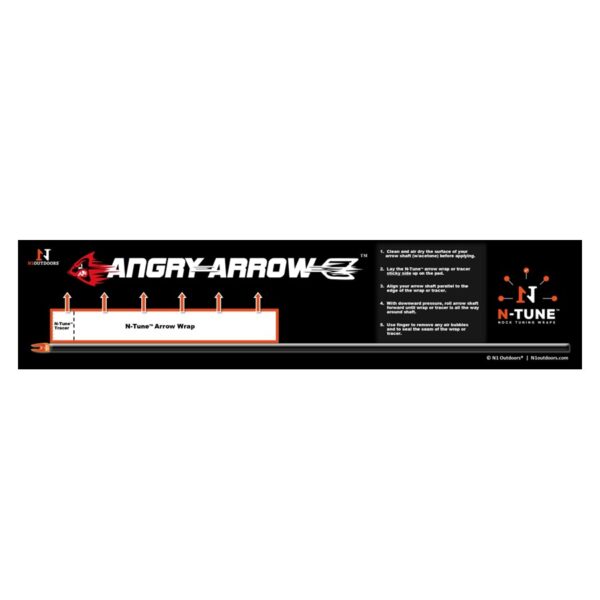

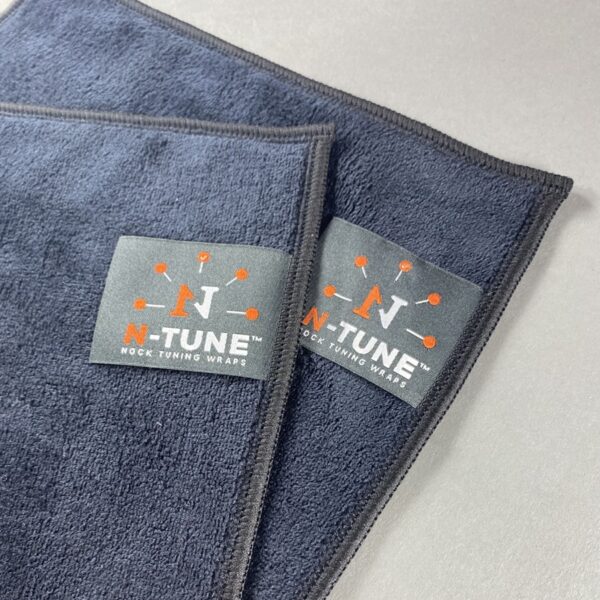

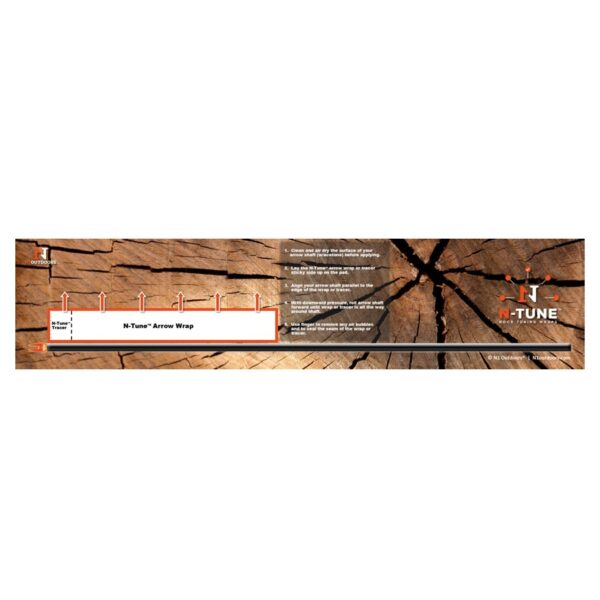

I had this broadhead in my quiver for a few years just never used it. Until last year. Had a nice doe pop in within range, then suddenly a decent 9 point appear . Already at full drawn on the doe , I moved over towards the buck moving into range. At a good downward angle I took the shot at 25 yards. Complete pass thru. With a “drain hole” you could push a 3/4 in. dowel thru, entry of blood trail to track him less than 40 yards. The key was the pass thru with an exit hole thru his lower chest. Definitely my choice for a broadhead this year. Todd.
Thank you for sharing that story Todd! Glad you were able to put a hole N1…
I used this arrowhead on a buck last year with my crossbow. 30 yards quartering away, it entered behind the last rib and made a complete pass through, coming out the center of its chest. The blood trail was incredible but not really needed. He crashed just inside the wood line within sight of my stand. One blade was bent but was able to bend it back with a pair of pliers and it’s good as new!
Those quartering away shots are devastating. Glad you were able to put a hole N1! Congrats!
I wanted to leave a review on the toxic broadlead. I used for the first time last weekend. I had a thirty yard shot at a massive buck. The buck was quartering slightly away from me, I took the shot and the buck moved slightly as I fired my crossbow. I struck the deer in the front shoulder, The arrow did not penetrate the shoulder. All I could do is watch a buck of a lifetime run off with my arrow still attached, and No blood trail. Maybe would have penetrated at 20 yards , I will not use this broadhead again, back to Rage.
I’ll admit when I first started bow hunting I developed a diverse broadhead portfolio. I’ve used the Toxic for several years with a lot of luck. The only downside is the durability of the blades if they knick the rib cage. I’ve never had one hit the shoulder bone. Anytime the toxic connects with a deer, it hasn’t ran more than 100 yards. Typically it’s been 30-60 yards. I’ve shot deer with Montecs and Rages, I plan on keeping the Toxic at the start of the lineup.
I’ve used the toxic for several years and all I can say is my freezer never runs out of deer meat. Entry and exit holes are incredible. Tracking distance is little to nothing since going to this broad head. .